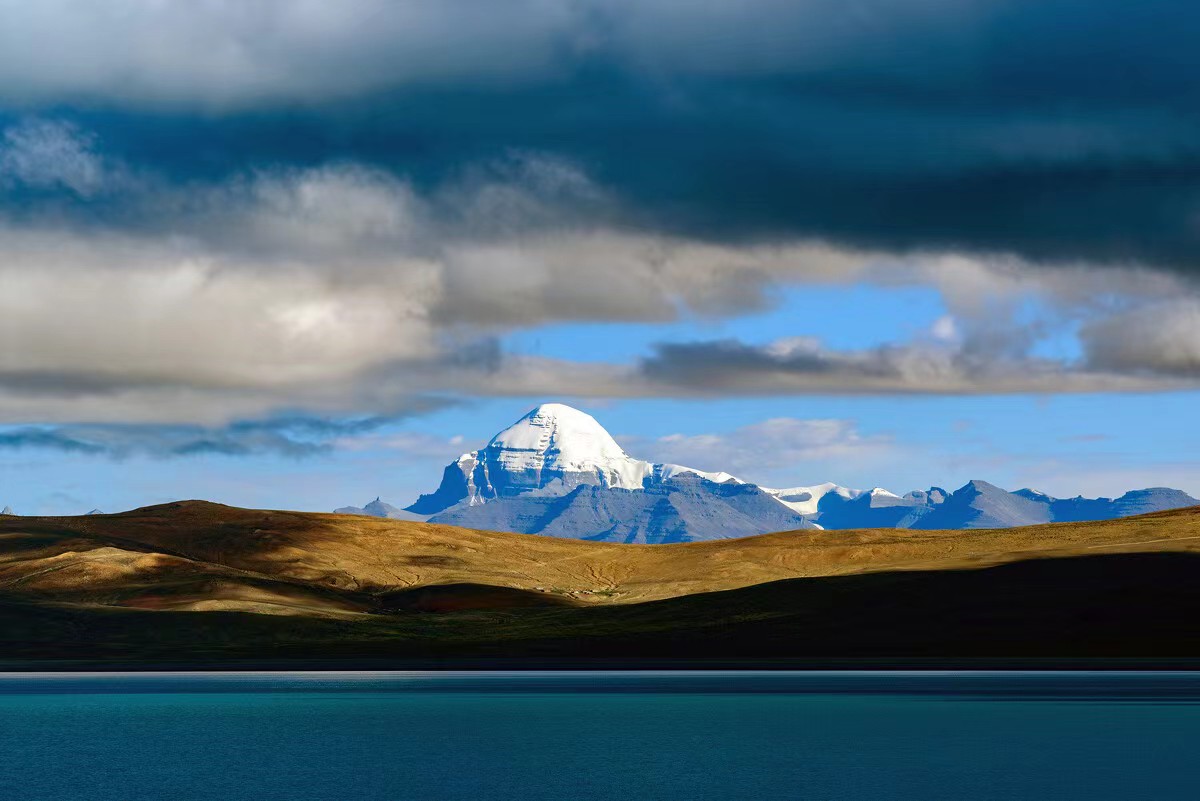Nestled amidst the majestic Himalayan ranges, the Kailash Mansarovar Yatra is a sacred pilgrimage that holds profound significance in Hinduism, Buddhism, Jainism, and Bon, making it a melting pot of diverse spiritual traditions. This journey is not just a physical expedition but a transformative experience that takes pilgrims to the abode of Lord Shiva, the divine Mount Kailash, and the pristine Mansarovar Lake. Let’s delve into the mystique and spiritual essence of the Kailash Mansarovar Yatra.
Geographical and Cultural Significance:
The Kailash Mansarovar Yatra is a trek that takes devotees through the rugged landscapes of Tibet, China, and the Himalayan region of India. The sacred Mount Kailash, standing at 6,638 meters, is believed to be the earthly abode of Lord Shiva in Hinduism and holds spiritual importance in various other religions. The Mansarovar Lake, located at an altitude of 4,590 meters, is considered to be the highest freshwater lake in the world and is believed to possess purifying properties.
Pilgrimage Route:
The journey typically begins from Kathmandu, Nepal, and involves arduous treks through the Tibetan Plateau. Pilgrims navigate through challenging terrains, crossing high mountain passes, and enduring varying weather conditions. The pilgrimage involves circumambulating Mount Kailash, known as the kora or parikrama, which is a symbolic act of devotion.
Spiritual Insights:
The Kailash Mansarovar Yatra is not just a physical expedition; it is a spiritual sojourn that provides pilgrims with an opportunity for self-reflection, introspection, and a deep connection with the divine. The pristine surroundings, the breathtaking landscapes, and the sense of isolation contribute to an atmosphere conducive to meditation and contemplation.
Religious Beliefs:
For Hindus, Mount Kailash is considered the ultimate destination for spiritual liberation, and the circumambulation of the mountain is believed to erase sins. In Buddhism, it is revered as the dwelling place of Buddha Demchok. Jains associate the mountain with their first Tirthankara, Rishabhadeva, while followers of the Bon tradition consider it a sacred site.
Challenges and Preparations:
The Kailash Mansarovar Yatra is not for the faint-hearted. Pilgrims face physical challenges such as high altitudes, extreme weather conditions, and challenging terrains. Adequate preparation, both physically and mentally, is essential. Pilgrims need to acclimatize to high altitudes, maintain physical fitness, and be mentally prepared for the rigorous journey.
Cultural Exchange:
The Yatra is not only a spiritual journey but also a unique opportunity for cultural exchange. Pilgrims from various countries and diverse backgrounds come together to share their beliefs, traditions, and experiences. This cultural amalgamation fosters a sense of unity and understanding among participants.
Conclusion:
The Kailash Mansarovar Yatra is a pilgrimage like no other, offering a blend of spirituality, adventure, and cultural richness. Beyond the physical challenges lies an opportunity for spiritual transformation, self-discovery, and a profound connection with the divine. For those who embark on this sacred journey, the Kailash Mansarovar Yatra becomes an unforgettable chapter in their spiritual and personal exploration.




















